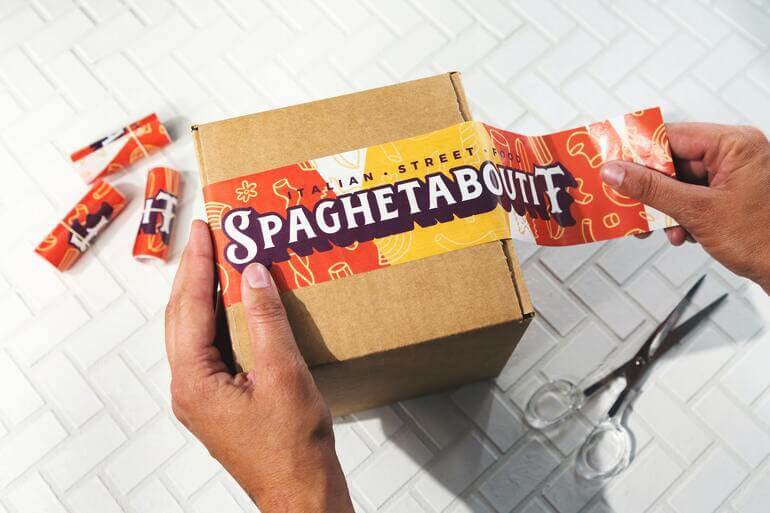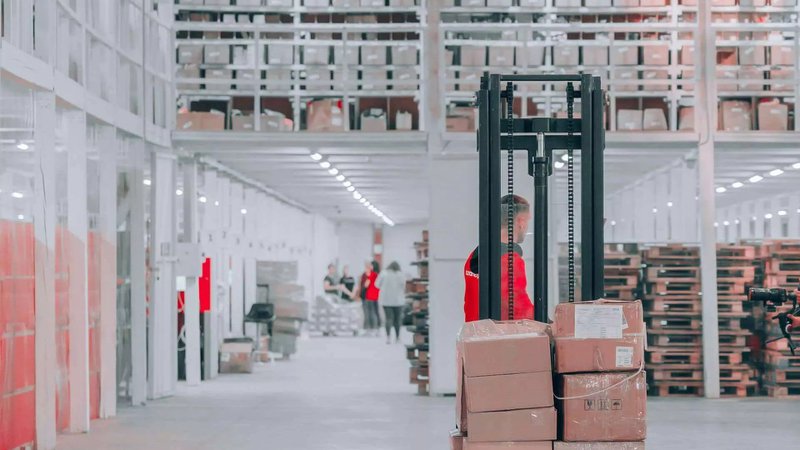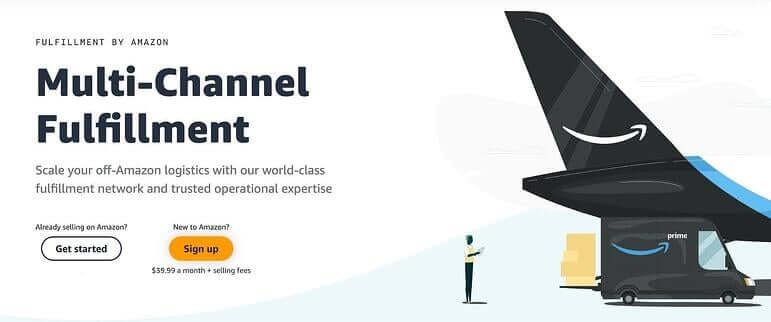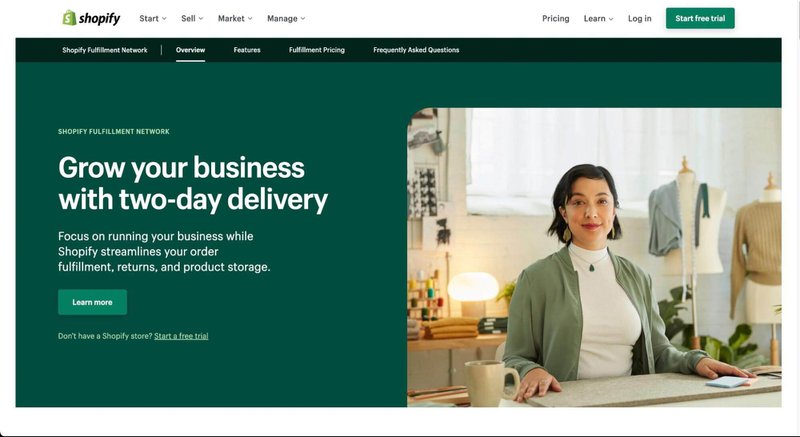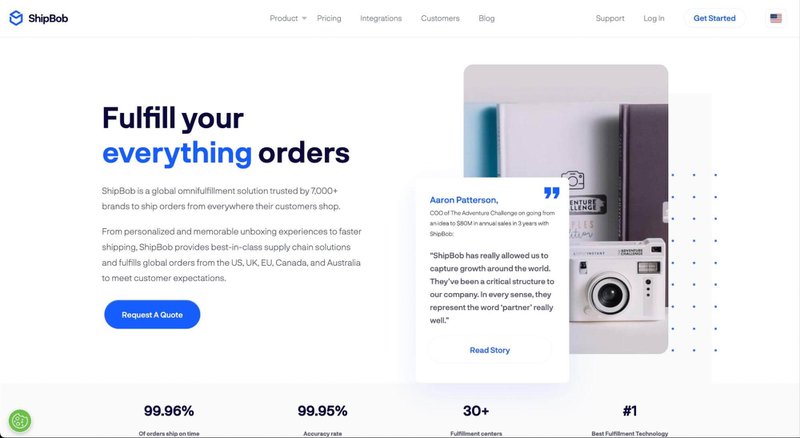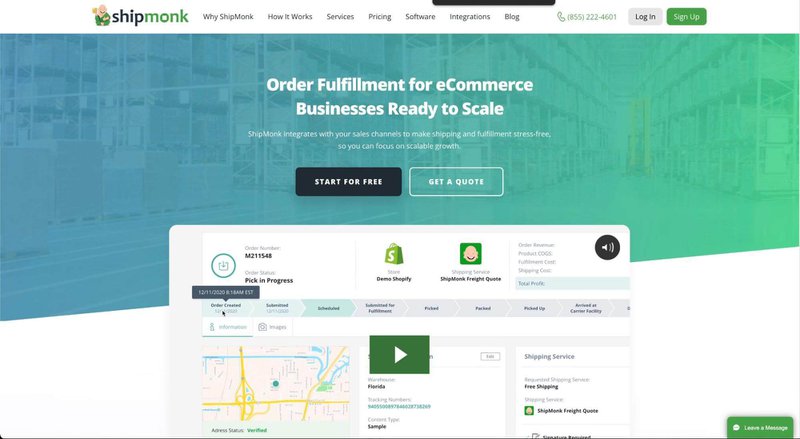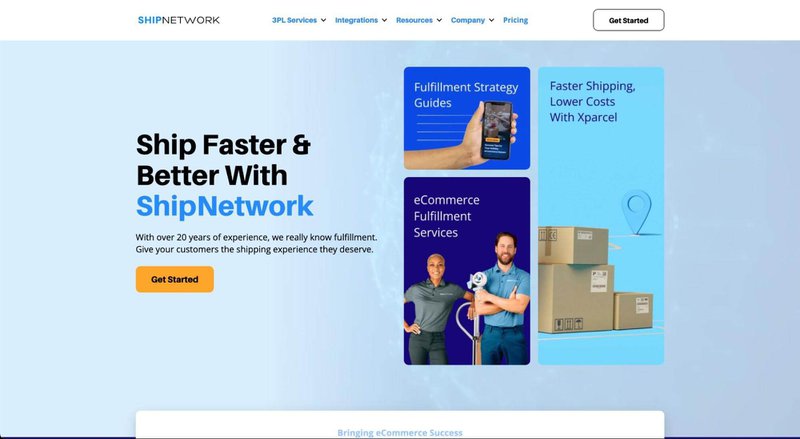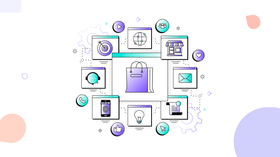6 Speedy Ways to Improve your eCommerce Fulfillment Process
Fast delivery = Happy customers. Here is how to improve your fulfillment process. We talk about multi-channel fulfillment, FBA, 3PLs, and inventory management.
Updated November 6, 2024.
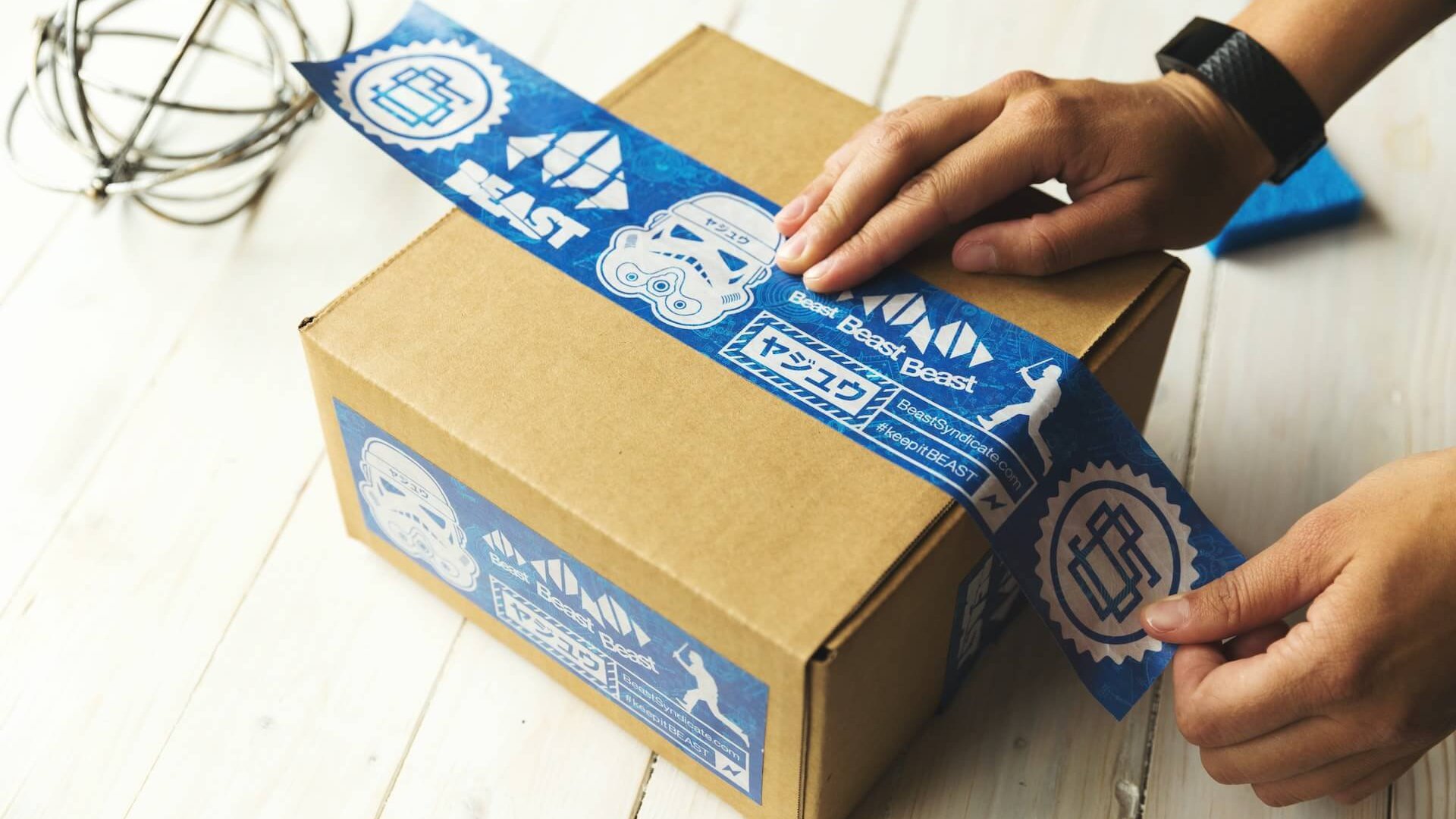
What do most successful eCommerce businesses have in common?
You guessed it, exceptional eCommerce fulfillment services.
It doesn't matter how great your product is, or how amazing your eCommerce marketing campaign is, they won't do you any good if your fulfillment process sucks. Fulfillment can make the difference between the success and failure of your eCommerce business.
A smooth fulfillment process can:
- Save you time and money returning products
- Help you get more happy customers and positive reviews
- Get you more referrals and word-of-mouth sales
- Convert more online shoppers into loyal customers
Optimizing your fulfillment process is key to delivering the perfect post-purchase experience but it's also a big reason companies stay competitive in the market.
Studies show that 38% of customers won't shop with a company again after just one negative delivery experience. If you can’t fulfill your product fast enough, then shoppers will go with a competitor that can guarantee faster delivery.
In this post, we’ll teach you everything you need to know about eCommerce fulfillment, how it works, and strategies you can use to improve it.
What is eCommerce fulfillment?
Ecommerce fulfillment is the process of picking the products from the shelves in the warehouse, packing the items, shipping them to customers, and processing returns and exchanges from the customer back to the warehouse. Some companies manage fulfillment in-house while others use a third-party fulfillment service with multiple warehouse locations.
3 types of eCommerce fulfillment models
There are three standard types of fulfillment models for eCommerce companies. Picking the right eCommerce fulfillment strategy for your specific business will depend on a lot of factors. To make the right choice, you’ll first need to understand all options.
In-house fulfillment
In-house fulfillment is when the eCommerce company fulfills its own orders by using its own facilities, employees, and other assets.
It is easy to implement, fairly inexpensive and gives companies complete control over the entire fulfillment process. However, it's hard to scale, takes a lot of time, and is limited by the number of employees, overhead costs, and warehouse space available.
Usually, in-house fulfillment makes the most sense for businesses that sell a limited number of items or have a small monthly order volume.
Third-party fulfillment
Third-party logistics (3PL) is a fulfillment solution designed for eCommerce companies that want to outsource fulfillment. A third-party fulfillment service manages various aspects of the supply chain for the business - including storing, packing, and shipping orders.
It allows them to focus more on perfecting and growing other things in their business like - developing new products, experimenting with new eCommerce marketing strategies, improving conversion rates, and more.
However, with 3PLs, eCommerce retailers need to rely on third-party vendors, which means they’re losing some control over their shipping, returns, and customer service. And businesses have to pay storage fees which vary based on the fulfillment location, inventory volume, and package size.
Multi-channel fulfillment
Another option to consider is multi-channel fulfillment. In this process, you manage and fulfill various sales channels such as your website, social media, and an online marketplace like Amazon. And this is where you hand over the fulfillment of all these channels to a third party.
For example, with Amazon's FBA you can literally hand off all your orders and have them shipped to the customer from an Amazon warehouse. You get faster delivery and happier customers, and it frees up more resources to help improve your sales and marketing and focus on scaling your business.
Some of the biggest eCommerce DTC brands grew from a small operation, packing boxes in someone's garage or living room to a giant multi-channel fulfillment monster.
How does eCommerce fulfillment work?
eCommerce fulfillment consists of four basic components - receiving, inventory management, order fulfillment, and reverse logistics.
Receiving
The first step involves accepting and storing all incoming inventory at the warehouse of a fulfillment and distribution center. The products are usually packed in pallets which are entered into stock and placed on shelves.
Inventory management
This is more of an ongoing step that involves keeping a record of inventory levels in the fulfillment center so that you can always be up to date on your stock and replace items when necessary. The better your inventory management is, the easier it will be for you to stay organized and streamline your shipping process.
Order fulfillment
Once an order is placed, it goes through three stages:
- Picking — First, the fulfillment center finds the ordered products in their warehouse.
- Packing — Once all items have been picked, they need to be securely packed, labeled, and meet all other standards of the courier company that will ship the package.
- Shipping — After the order has been properly packed and labeled, the delivery company will transport the package to their hub, from where it will be shipped to the customer.
Reverse logistics
The last step in the fulfillment process is when a customer wants to return their order.
The customer sends the order back to the shipping company. The courier sends it back to their hub and later to the fulfillment center. Then, the order goes through return processes to ensure that the items are re-stored on the shelves and that the customer gets their money back.
The average return rate for eCommerce brands is between 20% and 30%. Companies work really hard to service unhappy customers, provide excellent customer service, answer any customer questions, and process customer returns in the most efficient way possible. Studies show that 72% of customers that have a positive experience with a company will share it with 6 or more people.
Difference between 3PL and drop shipping
There’s one more way to get items shipped to customers — dropshipping. In dropshipping, a business doesn’t keep the products they sell in stock.
Instead, the eCommerce company purchases inventory on an as-needed basis from a third party, usually a manufacturer or a wholesaler. That third party is also responsible for fulfilling the order, and they’re the ones sending the order directly to your customers, unlike a 3PL, which ships your customers’ orders from their fulfillment warehouse.
Now that you know the different types of fulfillment and the steps in the process, let's talk about specific strategies to improve fulfillment for your business.
6 strategies to improve your eCommerce fulfillment process
Here are the steps you need to take to improve your fulfillment process.
1. Understand your order fulfillment cycle time
The first step is understanding your fulfillment cycle and the time it takes for a package to go from order to delivery. Look at the entire process and see how long everything takes. Here’s a general idea of the delivery and fulfillment process:
- Receive online order
- Process the order
- Notify the customer that the order has been received
- Send fulfillment request to the warehouse
- Order is picked
- Order is packed
- Order is shipped
- Send a shipment notification to the customer
- Order arrives
So how do you optimize the process? Here are a few things you could do.
2. Ensure a seamless integration
First, ensure that all your systems and processes are integrated and work well together. You don’t want to have a lag between receiving the order and shipping. You want to use software that does the job, and you might even want to set up automatic rules that move the order along without any manual involvement.
Use an order management system that integrates with your eCommerce website as well as all the warehouses and shipping carriers that you use. If you’re unsure how to do this, consider getting help from an eCommerce agency.
3. Use safety stock
You always want to carry enough supplies and products to ensure you don’t run out of inventory. That’s why you should use safety stock which is when you always have a set amount of stock for each product.
Safety stock helps you absorb any variations in demand that you may have throughout the year. The challenge here is that you don’t want to keep too much inventory in stock because it will affect your costs. So don’t use the average demand throughout the year but calculate the demand based on specific time periods to estimate better how much stock you need to have available.
4. Have end-to-end order visibility
You’ve connected all of your processes to the OMS, and you’ve automated your order management. You’ve even put some safety stock rules. Now what you need is to be able to see the entire process from start to finish.
You need visibility throughout your entire supply chain. You need to see where items are in the process and how much inventory you have for each product and be able to get feedback from customers about the quality of your product.
Transparency and visibility are key.
5. Communicate with your customer
One of the best ways to improve your fulfillment process is to serve your customer better, set expectations, and communicate often. Make sure that every customer touchpoint is automated through email and SMS communication.
You can use Zapier to connect your email tool to your order management system to make that communication even more precise and helpful for the customer.
6. Have a strong return and refund policy
Refunds and returns are an essential part of every eCommerce operation. Customers can’t try products in a store, so they often order the wrong size or product. Studies show that 25% of customers return between 5% and 15% of the items they buy online.
You should have a clear return and refund policy and communicate that with the customer. And don’t make a big deal when a customer wants to return their product or asks you to refund their order.
Every time you provide a stellar customer experience, you are improving customer satisfaction, building your brand reputation, and growing your sales in the long term.
Best eCommerce fulfillment services
If you’re considering doing anything more than in-house fulfillment, you’ll need to utilize an e-commerce fulfillment service and get their help with your fulfillment operations. However, since there are so many of them on the market today, and choosing the right one is complicated, we’ve narrowed it down to the five ones you should consider.
Shopify Fulfillment Network
This is an excellent fulfillment service for small businesses with a Shopify store because it creates a seamless experience for customers — as Shopify handles shipping, handling, and returns.
Speaking of delivery, the platform offers 2-day shipping, which improves customer expectations. Also, Shopify Fulfillment Network doesn’t charge any upfront fees in the first six months, which is excellent for businesses that are just starting out.
Fulfillment by Amazon (FBA)
If you’re making most or all of your sales on Amazon, you should consider Fulfillment by Amazon (FBA). The platform's benefits include 24/7 support, an inventory performance dashboard, and return management processes.
Similar to Shopify — partnering up with Amazon gives eCommerce retailers access to two business days shipping (in the form of Amazon Prime), which meets even the most challenging customer demands. And the best part is that conversion rates on FBA products tend to be higher, because customers know they will get them early, and on time.
Pro tip: want to launch your Amazon FBA program the right way? Check out our list of the top Amazon FBA specialists.
ShipBob
ShipBob is a fulfillment service that works with DTC and B2B companies. They have a vast network of fulfillment centers, allowing them to satisfy a worldwide customer base.
Their standout features include retail dropshipping, wholesale order fulfillment, custom packaging, and omnichannel fulfillment — which helps eCommerce retailers to fulfill sales across different marketplaces.
ShipMonk
ShipMonk is a 3PL platform and an eCommerce fulfillment center that works with B2B, DTC, and subscription box companies.
The standout features of ShipMonk include over 100 integrations — allowing it to easily fit into the existing eCommerce business, as well as transparent reports and billing. Their pricing page also includes a calculator, making it easy to estimate your own fees.
ShipNetwork (formerly known as Rakuten Super Logistics)
ShipNetwork is an eCommerce fulfillment provider and 3PL services company. The company previously operated under the name Rakuten Super Logistics, but it was bought and rebranded by FirstMile in August 2022.
The platform provides great shipping times and does domestic and international shipping, making all customers happy. The standout features of ShipNewtork include 100% order accuracy and return management.
Unlock the power of fulfillment for your brand
Outsourcing your eCommerce fulfillment process is probably one of the best ways to free your time and other valuable resources and focus on growing your business while ensuring that you’re still overcoming all logistics challenges in your business.
Are you interested in optimizing your existing eCommerce processes? Need help partnering up with an eCommerce marketing agency but don’t know where to start? Talk to one of our eCommerce experts today.
FAQs
What is a fulfillment partner?
A fulfillment partner is a third-party logistics company that offers inventory, order management, packaging, and shipping and handling services to other companies that want to outsource a huge part of their eCommerce fulfillment process to other companies.
What do fulfillment centers cost?
The typical price of fulfillment centers starts at $25 to $45 per hour (or $5 to $15 per pallet) for inventory receiving, $8 to $40 per pallet per month for storing, and $3 to $5 per order for picking and packing. When it comes to outbound shipping rates, it depends on the types of products you're shipping, weight, size, and whether it's an international or ground shipping destination.
Ecommerce fulfillment companies usually have shipping discounts on standard rates. The fulfillment costs usually include onboarding, return handling, inbound shipping, and account management fees. If you're just looking to rent some storage space in a warehouse then it would cost you $1.16 per square foot on average.
How do fulfillment centers work?
They work by handling receiving, inventory management, order fulfillment, and returns management for eCommerce companies. This eliminates the need for eCommerce retailers to package, address, and ship products to customers themselves.
What does a fulfillment company do?
A fulfillment company is responsible for eCommerce fulfillment for other businesses. They store, pack, deliver, and return customer orders for other businesses.
What does fulfillment mean in retail?
In retail, fulfillment includes sending products in bulk to retail stores or their distribution hubs. Those products are then individually sold to customers.
What is the difference between shipping and fulfillment?
Shipping is the actual transit of the package containing the customer’s order from the holding destination to the customer’s delivery address. It is one part of the fulfillment process, which encompasses everything from the moment the customer’s order goes through to the moment they receive their package.
